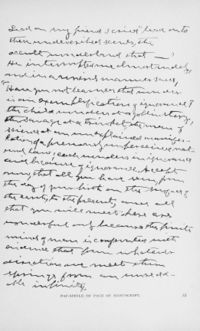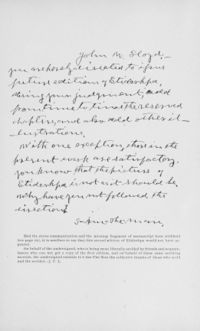Etidorhpa (1895 novel)
From Kook Science
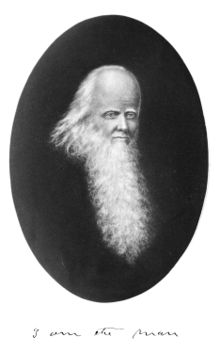 I am the Man (frontis illo. by J. A. Knapp) | |
| Author | John Uri Lloyd |
|---|---|
| Illustrator | J. Augustus Knapp |
| Location | Cincinnati |
| Pub. date | 1895 |
| Language | English |
| Subject | Allegorical chthonic journey |
| Followed by | The Land That Was, But Yet Exists (unpublished) |
Etidorhpa, or the End of Earth: the Strange History of a Mysterious Being and the Account of a Remarkable Journey as Communicated in Manuscript to Llewellyn Drury Who Promised to Print the Same, but Finally Evaded the Responsibility Which Was Assumed by John Uri Lloyd is an allegorical novel by John Uri Lloyd featuring illustrations by John Augustus Knapp, in which is described a journey through the underworld (via a cave entrance in Kentucky) and the narrator's development of occult wisdom thereby. The first edition was printed privately in 1895, later being republished and expanded for a wider audience, becoming such a popular title that it was ultimately published in eleven editions — with the final numbered edition being reprinted by publishers Dodd, Mead & Co. every few years after the initial 1901 release — and in seven translations.
Synopsis
The novel is layered into three stories: the meta-story of the compilation and publishing of the book by John Uri Lloyd; the framing story of the transmission of the manuscript by I-Am-The-Man to Johannes Llewellyn Llongollyn Drury; and the story contained in the manuscript, in which I-Am-The-Man is convinced to become initiated into a secret society in order to discover and reveal their secrets, only to discover the society itself had been the ones who convinced him to join, and who then capture and artificially age him, and from there send him to tour the underworld of the hollow earth with an eye-less guide, where he is shown the wonders therein and spiritually tested.
Editions
Author's Edition (1895)
- Lloyd, John Uri (1895), Etidorhpa (Author's ed.), Cincinnati: John Uri Lloyd (Printed by Cranston & Curtis), https://catalog.hathitrust.org/Record/010943752
Robert Clarke Co. (1896-1900)
- Lloyd, John Uri (1896), Etidorhpa (2nd ed.), Cincinnati: Robert Clarke, https://archive.org/details/etidorhpaorendof00lloy
- Lloyd, John Uri (1896), Etidorhpa (3rd ed.), Cincinnati: Robert Clarke, https://catalog.hathitrust.org/Record/000280541
- Lloyd, John Uri (1896), Etidorhpa (5th ed.), Cincinnati: Robert Clarke, https://catalog.hathitrust.org/Record/102514610
- Lloyd, John Uri (1896), Etidorhpa (6th ed.), Cincinnati: Robert Clarke, https://catalog.hathitrust.org/Record/100003179
- Lloyd, John Uri (1897), Etidorhpa (7th ed.), Cincinnati: Robert Clarke, https://catalog.hathitrust.org/Record/008614287
- Lloyd, John Uri (1898), Etidorhpa (8th ed.), Cincinnati: Robert Clarke
- Lloyd, John Uri (1898), Etidorhpa (9th ed.), Cincinnati: Robert Clarke
- Lloyd, John Uri (1900), Etidorhpa (10th ed.), Cincinnati: Robert Clarke
Dodd, Mead & Co. (1901-1920)
- Lloyd, John Uri (1901), Etidorhpa (11th, rev. & enl. ed.), New York: Dodd, Meade & Co., https://catalog.hathitrust.org/Record/000538514
- Lloyd, John Uri (1904), Etidorhpa (11th ed.), New York: Dodd, Meade & Co.
- Lloyd, John Uri (1907), Etidorhpa (11th ed.), New York: Dodd, Meade & Co., https://babel.hathitrust.org/cgi/pt?id=hvd.32044127325967
- Lloyd, John Uri (1914), Etidorhpa (11th ed.), New York: Dodd, Meade & Co.
- Lloyd, John Uri (1917), Etidorhpa (11th ed.), New York: Dodd, Meade & Co.
- Lloyd, John Uri (1920), Etidorhpa (11th ed.), New York: Dodd, Meade & Co.
Post-Dodd Reprints
- Lloyd, John Uri (1962), Etidorhpa, Amherst, Wis.: Inspired Novels — Ray Palmer's reissue of the book
- Lloyd, John Uri (1974), Etidorhpa, Albuquerque, N.M.: Sun Pub.
- Lloyd, John Uri (1978), Etidorhpa, New York: Pocket Books
- Lloyd, John Uri (1983), Etidorhpa, Pomeroy, Wa.: Health Research
Translations
- Lloyd, John Uri; Rossander, Jean Fr. (trans.) (1898) (in Swedish), Etidorhpa: Eller Jordens Ände. En Sällsam Historia Om en Hemlighetsfull Varelse Och Skildring Af en Märkvärdig Resa Enligt Ett Manuskript, Anförtrodt Åt Llewellyn Drury Som Lofvade Att Låta Trycka Detsamma, Men Slutligen Fritog Sig Från Ansvaret..., Göteborg: Torsten Hedlunds
- Lloyd, John Uri (1899) (in German), Etidorhpa od. das Ende der Erde, Leipzig: Wilhelm Friedrich
- Lloyd, John Uri; Fleurot, George G. (trans.) (in French), Etidorhpa, ou le Bout de la Terre
- Lloyd, John Uri (in Spanish), Etidorhpa, o el Fin de la Tierra
Table of Contents
PROLOGUE. — History of Llewellyn Drury
CHAPTER.
I. Home of Llewellyn Drury — "Never Less Alone than When Alone"
II. A Friendly Conference with Prof. Chickering
III. A Second Interview with the Mysterious Visitor
IV. A Search for Knowledge — The Alchemistic Letter
V. The Writing of "My Confession"
VI. Kidnapped
VII. A Wild Night — I am Prematurely Aged
VIII. A Lesson in Mind Study
IX. I Can Not Establish My Identity
X. My Journey Towards the End of Earth Begins — The Adepts Brotherhood
XI. My Journey Continues — Instinct
XII. A Cavern Discovered — Biswell's Hill
XIII. The Punch Bowls and Caverns of Kentucky — "Into the Unknown Country"
XIV. Farewell to God's Sunshine — "The Echo of the Cry"
XV. A Zone of Light, Deep Within the Earth
XVI. Vitalized Darkness — The Narrows in Science
XVII. The Fungus Forest — Enchantment
XVIII. The Food of Man
XIX. The Cry from a Distance — I Rebel Against Continuing the Journey
FIRST INTERLUDE. — THE NARRATIVE INTERRUPTED.
XX. My Unbidden Guest Proves His Statements, and Refutes My Philosophy
MY UNBIDDEN GUEST CONTINUES HIS MANUSCRIPT.
XXI. My Weight Disappearing
SECOND INTERLUDE.
XXII. The Story Again Interrupted — My Guest Departs
XXIII. Scientific Men Questioned — Aristotle's Ether
XXIV. The Soliloquy of Prof. Daniel Vaughn — "Gravitation is the Beginning and Gravitation is the End: All Earthly Bodies Kneel to Gravitation"
THE UNBIDDEN GUEST RETURNS TO READ HIS MANUSCRIPT, CONTINUING THE NARRATIVE.
XXV. The Mother of a Volcano — "You Can Not Disprove, and You Dare Not Admit"
XXVI. Motion from Inherent Energy — "Lead Me Deeper Into this Expanding Study"
XXVII. Sleep, Dreams, Nightmare — "Strangle the Life from My Body"
THIRD INTERLUDE. — THE NARRATIVE AGAIN INTERRUPTED.
XXVIII. A Challenge — My Unbidden Guest Accepts It
XXIX. Beware of Biology — The Science of the Life of Man — The Old Man relates a Story as an Object Lesson
XXX. Looking Backward — The Living Brain
THE MANUSCRIPT CONTINUED.
XXXI. A Lesson on Volcanoes — Primary Colors are Capable of Farther Subdivision
XXXII. Matter is Retarded Motion — "A Wail of Sadness Inexpressible"
XXXIII. "A Study of True Science is a Study of God" — Communing with Angels
XXXIV. I Cease to Breathe, and Yet Live
XXXV. "A Certain Point Within a Circle" — Men are as Parasites on the Roof of Earth
XXXVI. The Drinks of Man
XXXVII. The Drunkard's Voice
XXXVIII. The Drunkard's Den
XXXIX. Among the Drunkards
XL. Further Temptation — Etidorhpa Appears
XLI. Misery
XLII. Eternity Without Time
FOURTH INTERLUDE.
XLIII. The Last Contest
THE NARRATIVE CONTINUED.
XLIV. The Fathomless Abyss — The Edge of the Earth's Shell
XLV. My Heart-throb is Stilled, and Yet I Live
XLVI. The Inner Circle, or the End of Gravitation — In the Bottomless Gulf
XLVII. Hearing Without Ears — "What Will Be the End"
XLVIII. Why and How — The Straggling Ray of Light from those Farthermost Outreaches
XLIX. Oscillating Through Space — The Earth Shell Above Us
L. My Weight Annihilated — "Tell me," I cried in alarm, "is this a living tomb?"
LI. Is That a Mortal? — "The End of Earth"
FIFTH INTERLUDE.
LII. The Last Farewell
EPILOGUE. — Letter Accompanying the Mysterious Manuscript
Illustrations
"AND TO MY AMAZEMENT SAW A WHITE-HAIRED MAN." (I-Am-The-Man appears to Llewellyn Drury)
"MY ARMS WERE FIRMLY GRASPED BY TWO PERSONS." (I-Am-The-Man is abducted; this alludes to the William Morgan Case of 1826.)
"SOLILOQUY OF PROF. DANIEL VAUGHN. 'GRAVITATION IS THE BEGINNING, AND GRAVITATION IS THE END; ALL EARTHLY BODIES KNEEL TO GRAVITATION.'"
Maps
Facs.
Fac-simile of page of Manuscript
A page of the original hand-written manuscript by I-Am-The-Man, from Chapter XXV (25), The Mother of a Volcano.—"You Can Not Disprove, and You Dare Not Admit." As follows, it reads:
Lead on, my friend, I cried, lead on to these undescribed scenes, the occult wonderland that—
He interrupted me almost rudely, and in a serious manner said:
"Have you not learned that wonder is an exemplification of ignorance? The child wonders at a goblin story, the savage at a trinket, the man of science at an unexplained manifestation of a previously unperceived natural law; each wonders in ignorance, because of ignorance. Accept now that all you have seen from the day of your birth on the surface of the earth, to the present, and all that you will meet here are wonderful only because the finite mind of man is confused with fragments of evidence, that, from whatever direction we meet them, spring from an unreachable infinity.
"I-am-the-Man" to John Uri Lloyd
In the second edition, a letter from "I-Am-The-Man" to John Uri Lloyd was included, dictating terms for further editions and asking that an issue with one of Knapp's pieces of art be corrected; and, to this, Lloyd's response.
John M. Lloyd:—
You are hereby directed to issue future editions of Etidorhpa, ___ing your judgement; add from time to time the reserved chapter, and also add other illustrations.
With one exception, those in the present work are satisfactory. You know that the picture of Etidorhpa is not as it should be. Why have you not followed the directions?
I-Am-The-Man
Had the above communication and the missing fragment of manuscript been withheld (see page 161), it is needless to say that this second edition of Etidorhpa would not have appeared.
On behalf of the undersigned, who is being most liberally scolded by friends and acquaintances who cannot get a copy of the first edition, and on behalf of those same scolding mortals, the undersigned extends to I-Am-The-Man the collective thanks of those who scold and the scolded.—J.U.L.
Reviews
New Bohemian (1896)
"ETIDORHPA: A Review", New Bohemian: A Modern Monthly 2 (1): 10-13, January 1896, https://babel.hathitrust.org/cgi/pt?id=njp.32101064304718&view=1up&seq=236
THOSE inclined to look for a cause, out of which every existent fact springs, are prone to philosophize in regard to the conditions which surround them. From everything they exact a reason for its being — sometimes by taking the fact by the throat, and rudely demanding of it whether it be of the ancient family of Giblemites or not, sometimes by trying to lift the veil, and to determine from its features whether it be of our own tribe and kindred.
Each of us is ready to give a reason for every fact which he perceives, but that reason is always exactly equivalent to his perception of the fact. The yokel says that the sun rises because it is morning, and sets because evening has come. The poet says "God made Himself an awful rose of Dawn," and "In his robe of gold the sun sinks to his rest." The astronomer tells us that the sun does not rise or set — it simply seems to rise, because the revolutions of our world bring underneath its rays that part of earth which we inhabit; and it seems to set, because our section of the earth is whirled away from it. None of them know why that sun makes day and night, any more than they know why the walls of a chasm do not illuminate the shadowy depths below. They only know a few facts, but are ignorant of causes.
Yet facts remain, so long as the consciousness remains which can observe them. Heat and cold, sweet and sour, remain entities to us so long as we are conscious of them. Theories as to their origin may rise and die like mushrooms — we know that "it is hot," that "it is cold," that "this is sweet and that is sour." And this is all we know, for the wisest man can only say "I am conscious of it; it is so."
So men may speak of the New Testament as a myth; may declare that its alleged authors never had bodily existence; may scoff at its miracles and reject its Christ; yet the book remains, and, for some cause, the intelligent and progressive peoples of the world reckon time according to the Christian Era. We have centuries as mile stones of time, and we have a fixed point from which we begin to count the years backward, as well as forward. That this universal calendar should spring from a fable, and in the hands of a few fishermen and slaves, should be made to supplant all other computations of time, is hardly less a miracle than raising the dead and casting out devils. If we reject the inspiration of Scripture, it is, at least, reasonable to believe that the "Star of Bethlehem" actually shone in the heavens, since it is the beginning of an era in astronomy as well as history. Like the flaming sword of the Seraph, which pointed every way, it marks the ending of old systems, and lights up the darkness of chaos, from which was then born a new dispensation for the world. Like a pillar of fire it was set as a boundary.
The thoughtful observer can not help but notice how, since that time, the centuries have had their birth, their maturity, and their decadence unto death, just as a man has, and just as the day has its morning, noon, and night. And the birth and death of centuries, like the birth and death of man, seem to meet and touch each other. The old figure of the serpent with his tail in his mouth is continually repeated. The new year, the new century, is nourished by the harvests garnered in the autumn of the old. The dry leaves that are whirled by November blasts feed the plants which are to bud in April and bloom in May. We can not understand why Death should become the Father of Life; and the wisest can only say "it is so." We observe phenomena only to extract a principle from the collation of them. When we have found the principle, we must collate that with other principles in order to find another fact. In doing this some elusive essence is always lost. We may analyze a glass of wine into its constituents — when we put those same "elements" together again we do not have a glass of wine. The serpent's poison may be swallowed safely; to inject it is death. Yet by either process it goes into the system. The "why" always escapes us somewhere in our experiments.
So we do not know why the conjunction, or opposition, of heavenly bodies brings to the epochs their mental or physical convulsions, but we look for the death of old ideas with the going out of a century, and the birth of new thought with the beginning of the next. The Star of the East continues to arise, and the wise men come to worship it.
But I make my introduction too long, and, perhaps, to the general reader, too obscure. When we approach the mountain range we must first meet the foothills. From afar off the mountain range has seemed like a vaporous dream exhaled by the earth, and so blending with the sky that we can not tell when the world becomes a part of heaven. But the lower ranges, which we did not see before, confront us as we approach, and where we expected the land of Beulah, we find toilsome climbing. Even from the highest peak we can attain, we only see blue billows fading into a purple sky, on every hand. If we scale those peaks, we look back and see the same. Always we find Earth and Heaven as blending into one.
It is so in the book which I am beginning to review. It is called "Etidorhpa," and has for its author — or editor — Professor John Uri Lloyd, of Cincinnati, Ohio. If any man can tell whether it is of earth or heaven he can do more than this writer can. I have only read it twice, and skimmed it the third time, and after the cursory inspection which this review will demand — but which will be confined mainly to the passages I have marked and annotated — I hope to really and truly read it. It is a fascinating novel to the unlearned, a food for thought to the chemist, a subject of discussion to the philosopher, a stumbling block to the atheist, a help to faith, a guide to honest investigation, a blessed boon to the theosophist, and a revelation to the Mason who has been feeding on husks which the swine rejected, and now desires to return to the home of his father. In the lines it is the most characteristic book of the century: between the lines it may rank with Basil Valentine and Albert Pike. Scott, Byron, Coleridge, Shelley, Keats and Tennyson have played like sunbeams on the waters of our century — this book will be the nest-egg for the next.
Yes, one century broods upon another, and the eggs which are laid in "fin de siècle" times become the progressive actors in the new era. There is always something in the close of a century which is "to the Greeks foolishness and to the Jews a stumbling block" — to the generation next to come it is the power of God. We may be Greeks, or Jews, as we please, but those who come after us will be as they please.
This book I can not accurately describe — no man can. It is not the thought of one man, or of two; it is the epitome of the best thought which the Nineteenth Century has produced for the benefit of the era to come after it. How Professor Lloyd wrote it, why he wrote it, when he wrote it, whether he wrote it at all none of us may ever know. It is unbuyable, and probably no other edition of it will ever be issued: and no scholar who has a copy of it would part with that copy unless his family were starving, and he had already pawned his clothes.
It was said of the Ramayana:
"Happy he who reads this book entire! Happy he who has read but the half of it! It makes the Brahman wise, the soldier brave, the merchant rich. If, by chance, a Pariah hears it he becomes ennobled."
I can almost say the same for this book, provided it be read understandingly. I do not mean by that, to say that the reader must understand it all — no single reader can — no one man could have written it, no two will ever understand the book alike. I have in my library, as I write, the "Will of Basil Valentine," printed so long ago that the smell of the dead bookworms who sought to devour its leathern binding has become mellow as old cheese. It has more chemistry in it than is even now dreamed of in our laboratories, and is annotated by solitary students who made their notes in Latin, in Italian, and in hieroglyphics hard to understand. Through hundreds of years that book has passed from hand to hand; it has been studied by men of intellect and devoutness, yet no one today can tell its esoteric meaning. And when any one reading between the lines can fully comprehend "Etidorhpa" he can lecture on Basil Valentine with a perfect assurance that his audience will be composed of twelve men, and that he will be the chief actor in an inquest of lunacy.
I do not mean to say that "Etidorhpa" is the outcome of a disordered brain. It is poetry, it is science, it is theology, it is prophecy. I do mean to say that it is the outcome of a century's thought; the fermented wine of the past, of which we see only the foam on the beaker's brim, but our children shall drink it to the bottom of the cup. May it give joy to those who taste of it!
My first knowledge of this book came in a peculiar way. One day, in the office of a friend, I chanced to see upon his table a sample page of the, then, unpublished work. On it was a picture, and in the picture a face which came back to me over the desert sands of more than twenty years. Involuntarily I exclaimed "that looks like old Professor Vaughn!" It looked younger than he did, when I knew him, and — be it said in shame — much less shabby in apparel. The artist had clothed him much more elegantly than a cold and heartless world ever permitted him to clothe himself. His raiment was on his spirit, not his body, and the soul of the old philosopher was clothed upon by a divine garment such as Adam had before his fall.
Seeing this, I began to inquire. My friend knew nothing of Professor Vaughn — I did. In the early seventies, when I was a young fellow, whose ignorance was only equaled by his arrogance, Professor Vaughn came to the Kentucky town in which I lived. He was shabby and stoop-shouldered, wore a "shocking bad hat," and shoes which made the slimy puddles in the streets laugh because the socks on his feet already carried all the moisture which such poor subterfuges could contain. In his brain lived the Universe, and from the tip of his tongue' Philosophy and Poetry flowed as honey from the bee-tree when it is broken. Socrates was abroad in the land, and among none of us poor fools was there a Plato to perpetuate him. Maybe Professor Lloyd has done so — God bless him if he has!
This great, and good, man starved to death in his own town, and they commemorate his greatness by a bronze bust in the public library. His spirit still lives on earth — I trust some of it in me, and more of it in people better fitted to make his teachings useful to the world. Professor Lloyd is the first of these last. The sun sets, hidden by clouds, perhaps. It rises again with healing in its wings; none but the blind fail to see it. And, as to the esoteric meaning of "Etidorhpa," most of the present generation will be blind, not knowing they are blind, believing that they see, yet seeing not.
As to Professor Vaughn, the author of "Etidorhpa" gives a clear description so far as the spiritual eye can see it. It is not in tended for him as a figure of the romance, a personage of the story, yet it is Professor Vaughn in all respects. He says:
"He was verily a wonderful being; an eyeless creature, and yet possessed of sight and perception beyond that of mortal man; a creature who had been locked in the earth, and yet was more familiar with its surface than a philosopher; a cavern bred monstrosity, and yet possessed of the mind of a sage; he was a scientific expert, a naturalist, a metaphysical reasoner, a critic of religion, and a prophet. He could see in absolute darkness as well as in daylight; without a compass he could guide a boat over a trackless sea, and could accomplish feats that throw Gulliver and Munchausen into disrepute." (Page 296.)
That the spirit of such a man should project itself beyond the short span of his earthly life, is the least compliment that we can pay to the soul's immortality. That the essential spirit of man, the divine part of him, is one of the elements of Eternity, few thinking creatures doubt: that the soul of man — the Earth-Spirit, as the Germans call it — survives the body, and, in some way, hovers about its earthly home is believed by many good and educated people. I do not think that the soul — the "Erd-Geist" — of Professor Vaughn would content itself with playing an accordion in the dark; but I can conceive how it would be fittingly employed in editing such a book as "Etidorhpa." Certainly his thought — perhaps I should say his dream, for thought and dream were one with him — pervades the book just as color does the rose, and fragrance pervades the censer's smoke. Let it be no disparagement to Professor Lloyd, to say that he has builded the dreams of Daniel Vaughn into structures more durable than his printed page will be, more beautiful than is often seen in Fancy and in Romance.
Professor Lloyd himself is a strict scientist, and an exact writer of more than national renown. That he should have given to the world such a book, shows that the dreams of scientists in one century may easily become the exact facts of science in the next. Paracelsus was a quack, and Roger Bacon was a magician, but to-day laudanum relieves the pain which gunpowder brings to the suffering soldier. Galvanism was a speculation: the telephone is a domestic implement almost as common as the skillet. The scientists, falsely so called, ridiculed Mesmer, but rush headlong into print now trying to prove what they think they know about hypnotism. It is more than possible that the "Vril" of Bulwer's coming race will soon supersede gunpowder, and the General whose will is strongest, and whose life the purest, may paralyze the enemy's battalions by pointing at them with his finger or his staff. Then indeed may swords be beaten into plow-shares and spears into pruning- hooks. So mote it be! Jesus knew when power went out from him to heal the sick; if in like manner one could subdue his enemies, the millennium is come.
The book I have tried to touch upon has nothing in it more improbable than would have seemed the present uses of electricity to the London banker at Tellson's, or to Mr. Flintwitch in the counting room of Mrs. Clenman. It narrates a journey into the crust of the earth, every step of which is so skillfully described, and every phenomenon so scientifically explained, that the reader can not help but feel as if it were an actual tour taken by himself in person. The interest never flags, the purpose is never wanting.
I had intended to make some extracts from its pages, but lack of space forbids more than the one which has been quoted. It is not at all a quotable book, though it abounds in poetry, in philosophy, in rhetoric. Its engravings are masterly; its printing and paper are superb; it is an edition deluxe from first to last. It has come upon this generation as a surprise — a bed of violets over which and even through whose fragrance the lightnings seem to quiver. Our successors will know the book better, and the scientist of 2000 A.D. will treasure the memory of Professor John Uri Lloyd.
I cannot conclude this article better than by giving the reader, in Professor Lloyd's own language, his address:
"To the recipients of the Author's edition of Etidorhpa:
"One whose study of the material [to himself] has discredited materialism and who sees in every form of matter a marvel inexplainable; who considers fact to be as strange as fiction and that things visible are but verses in God's wonder book ; who believes a fairy story to be not less true than many visions scientific and that mind can not conceive of creatures more wonderful than nature fashions; who believes that fancy can not carve thought matter into structures more weird and grotesque than God creates in objective fact; that force and spirit are neither less real one than the other and that matter is not more substantial than either; who loves the mysterious and the beautiful and sees mystery and beauty in all visible structures and all possible thought creations; who questions if a line can be drawn between fact and fiction or if man can demonstrate where real things end and those fanciful begin; who questions if enthusiasm intense is far separated from sarcasm deep: who believes the cynic is often more of an educator than the sage and that the study of matter may finally bring man to question if the very attributes of matter are not qualities of force; — should not, in the record that follows, at tempt to differentiate between history and romance, fact and fancy, speculation and science, sarcasm, ignorance and irony — consequently the writer will make no subsequent comment concerning the work to follow.
"Respectfully,
"John Uri Lloyd.
"Norwood, Ohio, July 4th, 1895."In this dedication, if so it can be called, is well depicted the personality of the author, and fully foreshadowed the purposes of the book. It is not intended for the general reader, not written to please school girls and sophomores, not adapted to while the idle hours at a summer watering place. It is at home by the fireside when the keen winds whistle and the snow is drifting. Then to the student, the poet, the recluse, it becomes a companion. Its thought will answer his, its poetry will breathe songs through the harp strings of his heart, its dreams will be so wedded to his own that each of them will seem like the young child of two loving parents.
With reluctance now I close this article. To quote from the book itself again, "neither do I court praise or shun censure" in writing it. "My purpose is to tell the truth." If, in what I have done, anything is suggested that will shed light on this remarkable production to one who has read it, or lead one honest mind to read it for the first time. I shall be surely gratified at my success. It has been a labor of love on my part — if it be read as kindly as it has been written, there certainly will be some who will be made better by
Falcon.
Borderland (1897)
Stead, William Thomas, ed. (October 1897), "ETIDORHPA, OR THE END OF THE WORLD.", Borderland: A Quarterly Review and Index 4 (4)
THIS is a very wonderful book and a very clever book. Why it has not been published in England I cannot say. It was first published in 1894 in Cincinnati, and it has since been through six editions. It is published by the author at two dollars, and is very handsomely got up. Sir Henry Irving, when he was in America in 1896, said that he had "read this wonderful book with the greatest interest and pleasure,” and was so struck by it that he sent copies to several friends in America and in England. It is difficult to explain what the book is, or to define exactly what amount of actual science there is worked up into the ingenious speculations of the author; but one thing is quite unmistakable, and that is that "Etidorhpa" deserves to take a high place as a romance of adventure. It has been compared to Jules Verne's work, and is not unworthy of the comparison. The conception is bold, and is carried out with a somewhat Poe-like genius.
THE IDEA OF THE STORY.
The idea in brief is that a member of a secret society, whose secret he has divulged, was, as a penalty for his breach of confidence sentenced to travel to the interior of the earth, in order that by passing through the Valley of the Shadow of Death, he might learn the mysteries of life.
THE GUIDE TO THE WORLD'S CENTRE.
He was taken to Kentucky, where he was met by seven mysterious adepts, who converted him into an old man, with a wrinkled face and white hair, and then handed him over to a guide, who compelled him to descend into one of the mysterious caverns which abound in Kentucky. He was handed over to another, whose appearance is thus described.
He was less than five feet in height. His arms and legs were bare, and his skin — the colour of light blue putty — glistened in the sunlight like the slimy hide of a water dog. He raised his head, and I shuddered in affright as I beheld that his face was not that of a human. His forehead extended in an unbroken plane from crown to cheek-bone, and the chubby tip of an abortive nose without nostrils formed a short projection near the centre of the level ridge which represented a countenance. There was no semblance of an eye, for there were no sockets. Yet his voice was singularly perfect. His face — if face it could be called — was wet, and water dripped from all parts of his slippery person. Yet, repulsive as he looked, I shuddered more at the remembrance of the touch of that cold, clammy hand than at the sight of his figure, for a dead man could not have chilled me as he had done, with his sappy skin, from which the moisture seemed to ooze as from the hyde of a water lizard."
THE JOURNEY THROUGH THE EARTH.
Accompanied with this strange monster, they travelled miles deep into the earth. His weight becomes less, and they are able to leap over rocks and drop down precipices as if they were light as feathers. They travelled through gigantic forests of fungi, which, instead of being clammy and cold, were pleasantly warm and as soft as velvet. He passed through all manner of strange places, visiting the womb of a volcano, and travelling over underground lakes in boats which speed without sail, or oar, or steam. In the course of narrating his marvellous adventures of the author of this book, a mysterious visitor, who is known as "I-am-the-Man-who-did-it," and who has no other name, tells him how every man can see the inside of his own brain.
HOW TO SEE YOUR OWN BRAIN.
This passage I quote on account of certain speculations with which it concludes:
Placing himself before the sashless window, which opening appeared as a black space pictured 'against the night, the sage took the candle in his right hand, holding it so that the flame was just below the tip of the nose, and about six inches from his face. Then facing the open window he turned the pupils of his eyes upward, seeming to fix his gaze on the upper part of the open window space, and then he slowly moved the candle transversely, backward and forward, across, in front of his face, keeping it in such position that the flickering flame made a parallel line with his eyes, and as just remarked, about six inches from his face, and just below the tip of his nose. Speaking deliberately, he said:
"Now, were I you, this movement would produce a counter irritation of the retina; a rhythm of the optic nerve follow, a reflex action of the brain accompanying, and now a figure of part of the brain that rests against the skull in the back of my head would be pictured on the retina. I would see it plainly, apparently pictures of the brain thrown across the open space before me."
"Incredible!" I replied.
"Try for yourself," quietly said my guide.
Placing myself in the position designated, I repeated the maneuver. When slowly a shadowy something seemed to be evolved out of the blank space before me. It seemed to be as a grey veil, or like a corrugated sheet as thin as gauze, which, as I wave upon it and discover its outline, became more apparent and real. Soon the convolutions assumed a more decided form, the grey matter was visible, filled with venations, first grey and then red, and as I became familiar with the sight, suddenly the convolutions of a brain in all its exactness, with a network of red blood venations, burst into existence.
I beheld a brain, a living brain — my own brain: and as an uncanny sensation possessed me, I shudderingly stopped the motion of the candle, and in an instant the shadowy figure disappeared.
"Have I won the wager?"
"Yes," I answered.
"No, you have seen but a small portion of the brain convolutions, only those that lie directly back of the optic nerve. By systematic research, under proper conditions, every part of the living brain may become as plainly pictured as that which you have seen."
"And is that all that could be learned?" I asked.
"No," he continued. "Further development may enable men to picture the figures engraved on the convolutions, and at last to read the thoughts that are engraved within the brains of others, and thus through material investigation the observer will perceive the recorded thought of another person. An instrument capable of searching and illuminating the retina could be easily affixed to the eye of a criminal, after which, if the mind of the person operated upon were stimulated by the suggestion of an occurrence either remote or recent, the mind faculty would excite the brain, produce the record, and spread the circumstances as a picture before the observer. The brain would tell its own story, and the investigator could read the truth as recorded in the brain of the other man. A criminal subject to such an examination could not tell an untruth, or equivocate; his very brain would present itself to the observer."
"Any one can repeat it with a candle in any room not otherwise lighted, by looking at a blackboard, a blank wall, or blank space."
After this demonstration the mysterious stranger, "I-am-the-man who-did-it,” discoursed concerning volcanoes, and expounded various theories, one of which is that all matter is retarded motion. The primary colours can be redivided, and in the interior of the earth it is possible to cease to breathe and still to live. Breath, he declares, is one of the worst things connected with mortal life. If it only could be abolished, the natural life of man could be, and yet will be, doubled, trebled, and multiplied a dozen, yea, a thousand fold.
THE DRUNKARD'S DEN.
Then, in the course of his tribulations in the interior of the earth, the traveller passed through the drunkards' den, a place where drunkards are confined, and here occurs a very original and extraordinary conception. The vast amphitheatre in which the drunkards were confined was filled with ignoble monsters, each of whom had some malady, or organ developed at the expense of all the rest of his body. One man would have a single leg twelve feet high, surmounted by puny human form. Another would have a huge ear attached to a small head and body; a third, a nose so large that the puny figure to which it was attached was forced to walk with his nose high in the air to prevent the protubus rubbing on the floor, and a pair of enormous feet walked about, seemingly attached to the body of a child with the face of that of a man.
"Why," he asked, "are these creatures so distorted?"
The answer his guide told him was that in this region the physical form corresponded to the abnormal development of the spirit form which takes place when men give way to drink. On earth the soul of a mortal protrudes from the visible body, but it is invisible. Drink brings the spirit of a drunkard to unnatural forms. The soul of an earth drunkard is largely outside his body, and hideous in the extreme. As on earth the spirit dominates the nose and face, and if we could be suddenly gifted with a sense of mind sight, we would find ourselves surrounded by persons as misshapen as any delirious imagination can conjure.
APHRODITE.
A delirious imagination itself, which pictures the horrors through which the pilgrim passed in the drunkards den, and afterwards through the cavern which is a very chamber of Aphrodite. There he meets Aphrodite, who in this story is no Goddess of Temptation, but rather a guardian angel, and then we learn that the title of the book "Etidorhpa" is nothing more than the name of Aphrodite printed backwards. And so they go on and on, through all manner of caverns, experiencing innumerable adventures, until, at last, he reaches the fathomless abyss and the edge of the earth's shell. When he reaches this point, his mysterious guide clasps him in his arms and leaps with him into the hollow centre of the world.
The end of the story must be read in the book itself. It is a most puzzling story, and one that is full of ingenious speculations presented in the form of a quasi-scientific narrative.
San Francisco Call (1901)
"Etidorhpa", San Francisco Call 87 (30), 1901-06-30, https://cdnc.ucr.edu/cgi-bin/cdnc?a=d&d=SFC19010630.2.172.15.1&e=-------en--20--1--txt-txIN-Etidorhpa-------1
A wild flight of imagination; eccentric as the antics of a suburban cow on a stampede; mixed with ponderous chunks of dubious philosophy and learned speculations on the possibility of the Impossible, has been put in book form and called "Etidorhpa." You must read the title backward to get the name. This beautiful little device for making mysteries is of a kind with the rest of the book. The author, John Uri Lloyd, with one scimiter-like swoop of his literary pen cuts all the inside out of the world and then in this vast hollow, about 7000 miles in diameter, he lets his imagination run wild. He proves with much elaboration that Kentucky is the gateway to this Plutonian underworld, basing his theory not upon the fact of its feuds and moonshining, but for the reason that there is already a large cave there.
For people who are inclined to be dizzy or light-headed the book is not pleasant reading. It mixes too much fact and theory with sophistical experiments of the high-school laboratory. And then, worse than that, the hero falls 35,000,000 feet in one place, as near as the tired reader would care to figure it out. The first fourteen chapters make good skipping.
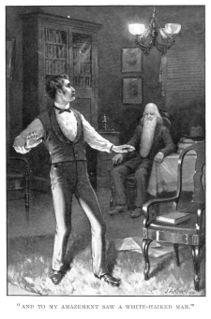

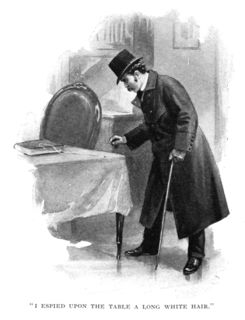
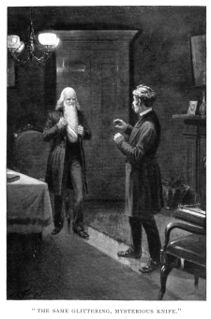
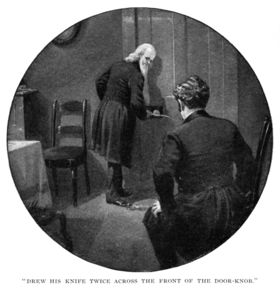
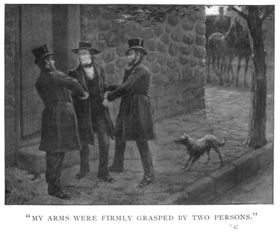
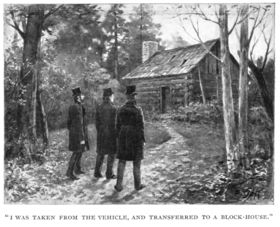
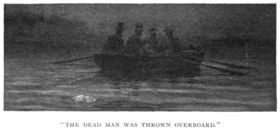
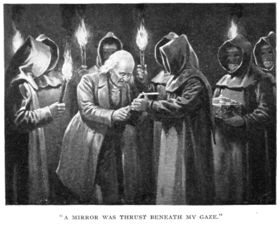
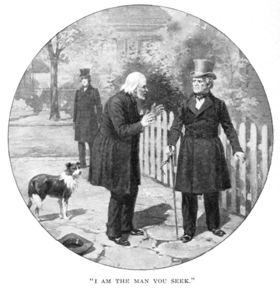
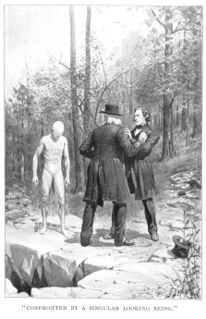
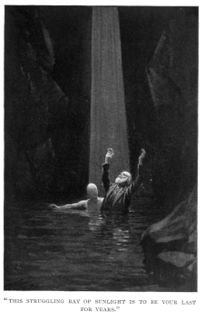
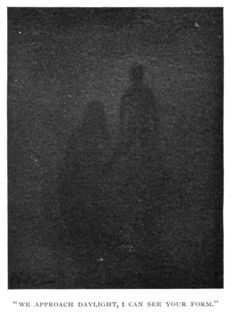
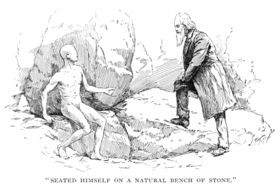
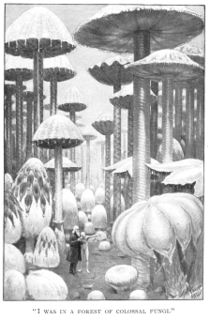
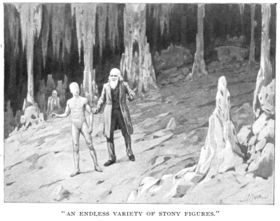
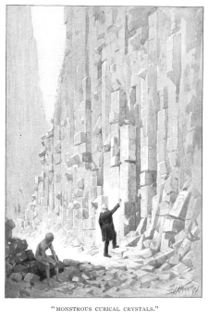
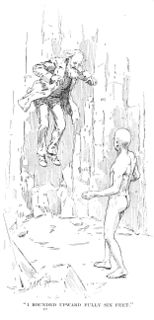
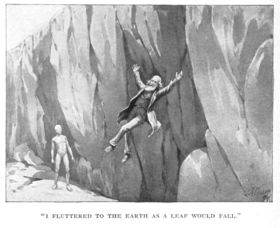
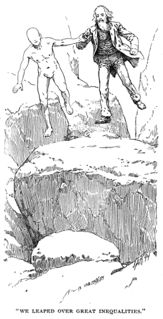
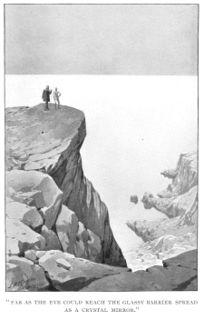


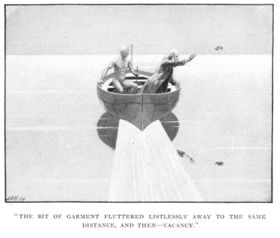
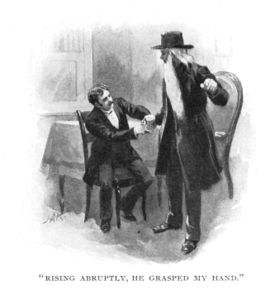


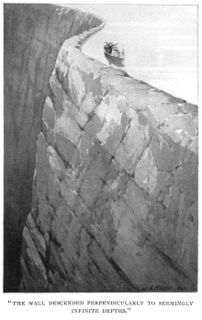

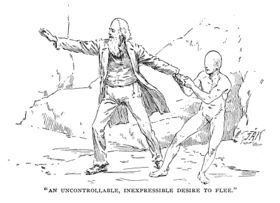
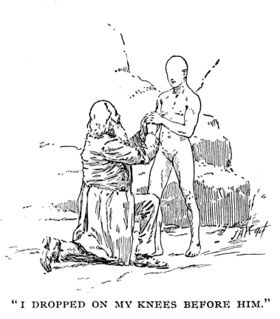
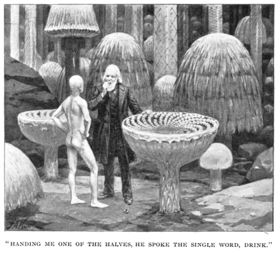
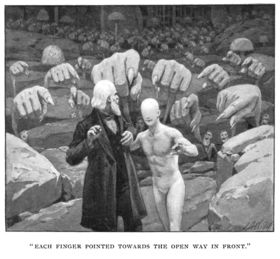
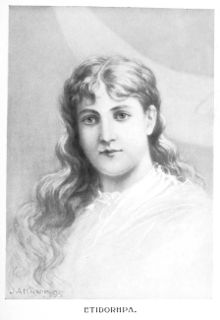
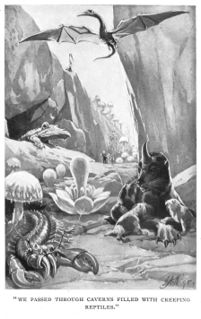
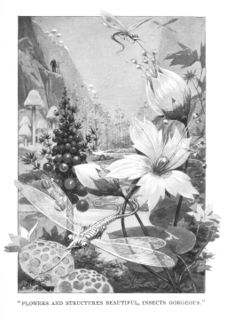
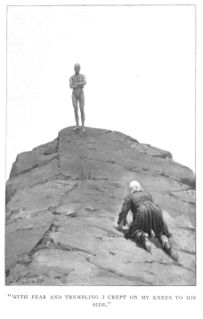
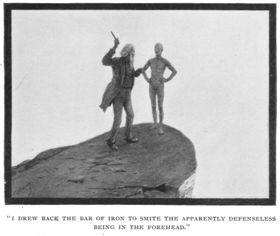
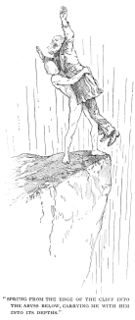
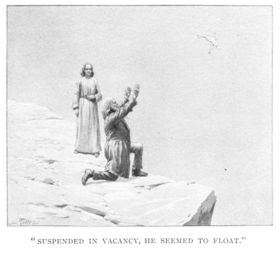
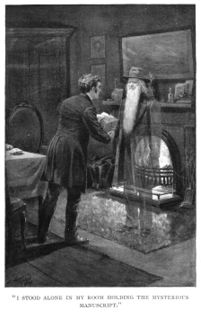
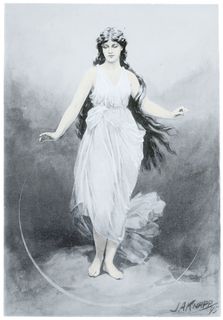
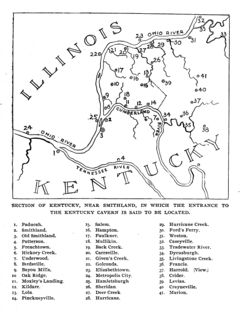
![Description of the Journey from K. [Kentucky] to P. — "The End of the Earth."](/w/images/thumb/c/c6/John_Uri_Lloyd_-_Etidorhpa_-_p.357.jpg/237px-John_Uri_Lloyd_-_Etidorhpa_-_p.357.jpg)
